Children and Adolescents
7.2.3. Management of asymptomatic neonates of mothers with TB
TB disease should be excluded in neonates born to women with presumptive or confirmed TB. The level of infectiousness and drug susceptibility in the mother should be determined. It is not necessary to separate the neonate from the mother. Breastfeeding should be continued and the mother advised to wear a surgical mask when close to the baby (191).
7.2.2.1. Management of congenital and neonatal TB
Treatment of congenital TB and neonatal TB is the same. Both should be managed by a clinician experienced in the management of paediatric TB. A complete investigation of mother and neonate should be undertaken. CXR should be done and appropriate specimens collected for Xpert MTB/RIF or Ultra to confirm the diagnosis of TB in the neonate (see Chapter 4). Treatment should be started based on the likelihood of TB, even before bacteriological confirmation is received, as TB can progress rapidly in neonates.
7.2.2. Congenital and neonatal TB
Congenital TB is TB disease acquired in utero through haematogenous spread via the umbilical cord or at the time of delivery through aspiration or ingestion of infected amniotic fluid or cervicovaginal secretions. Congenital TB usually presents in the first 3 weeks of life and has a high mortality rate. Neonatal TB is TB acquired after birth through exposure to a person with infectious TB (usually the mother but sometimes another close contact). It is often difficult to distinguish between congenital and neonatal TB. Management is the same.
7.2.1. Screening for TB in pregnant women living with HIV
Pregnant women living with HIV are a key population for screening for TB disease, given the suppressed immune status of the mother and the importance of protecting the health of the fetus. TB screening for this population should be integrated with prevention of vertical transmission and antenatal care. Table 7.4 provides an overview of the diagnostic accuracy of different screening tools (13).
7.2 TB in pregnancy and management of newborns of mothers with TB disease
TB contributes to 6–15% of all maternal mortality and leads to adverse pregnancy outcomes (187). A national registry study found incidence rate ratios for TB in pregnant and postpartum women of 1.4 and 1.9, respectively, compared with non-pregnant women (188). TB in pregnancy is associated with adverse maternal outcomes and complications during birth, such as pre-eclampsia, eclampsia, vaginal bleeding, hospitalization and miscarriage.
7.1.8. Immune reconstitution inflammatory syndrome
Also known as a paradoxical reaction, IRIS is a temporary clinical deterioration that may occur within 3 months (most commonly within the first month) of starting ART. As the immune system starts to recover after ART is initiated, the CD4 count increases and the viral load is suppressed. This reconstitution of cell-mediated immunity in response to mycobacterial antigens can trigger an inflammatory reaction to TB antigens at the sites of TB disease. This causes either deterioration of a treated infection or new presentation of a previously subclinical infection (6, 184, 185).
7.1.7.4. TPT in children and adolescents living with HIV on antiretroviral therapy
A key challenge with rifamycin-based TPT regimens in people living with HIV is drug–drug interactions. Rifampicin and rifapentine can be co-administered with EFV or DTG without dose adjustment. In people on RAL and rifamycins, however, a higher dosage of RAL (800 mg twice a day instead of 400 mg twice a day) should be used.
7.1.7.3. Adjustments to antiretroviral therapy regimens with TB treatment
In people with TB/HIV coinfection, the dose of DTG needs to be doubled by giving it twice instead of once a day because of drug–drug interactions with rifampicin. This extra dose of DTG is well tolerated, with equivalent efficacy in viral suppression and recovery of CD4 cell count compared with EFV (182, 183).
Table 7.2 summarizes changes needed to ART regimens for neonates, children and adolescents who are on ART when TB treatment is started, or who start ART while on TB treatment.
7.1.7.2. Choice of antiretroviral therapy regimen
The 2021 WHO consolidated guidelines on HIV prevention, testing, treatment, service delivery and monitoring provide recommendations based on rapidly evolving evidence of safety and efficacy and programmatic experience using DTG and low-dose EFV in pregnant women and people (including children and adolescents) with TB/HIV coinfection (78).
Pagination
- Previous page
- Page 4
- Next page
 Feedback
Feedback